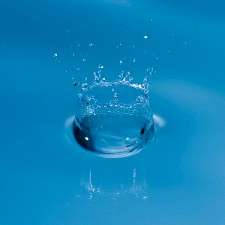Project uses crowd computing to improve water filtration

Nearly 800 million people worldwide don't have access to safe drinking water, and some 2.5 billion people live in precariously unsanitary conditions, according to the Centers for Disease Control and Prevention. Together, unsafe drinking water and the inadequate supply of water for hygiene purposes contribute to almost 90% of all deaths from diarrheal diseases—and effective water sanitation interventions are still challenging scientists and engineers.
A new study published in Nature Nanotechnology proposes a novel nanotechnology-based strategy to improve water filtration. The research project involves the minute vibrations of carbon nanotubes called "phonons," which greatly enhance the diffusion of water through sanitation filters. The project was the joint effort of a Tsinghua University-Tel Aviv University research team and was led by Prof. Quanshui Zheng of the Tsinghua Center for Nano and Micro Mechanics and Prof. Michael Urbakh of the TAU School of Chemistry, both of the TAU-Tsinghua XIN Center, in collaboration with Prof. Francois Grey of the University of Geneva.
Shake, rattle, and roll
"We've discovered that very small vibrations help materials, whether wet or dry, slide more smoothly past each other," said Prof. Urbakh. "Through phonon oscillations—vibrations of water-carrying nanotubes—water transport can be enhanced, and sanitation and desalination improved. Water filtration systems require a lot of energy due to friction at the nano-level. With these oscillations, however, we witnessed three times the efficiency of water transport, and, of course, a great deal of energy saved."
The research team managed to demonstrate how, under the right conditions, such vibrations produce a 300% improvement in the rate of water diffusion by using computers to simulate the flow of water molecules flowing through nanotubes. The results have important implications for desalination processes and energy conservation, e.g. improving the energy efficiency for desalination using reverse osmosis membranes with pores at the nanoscale level, or energy conservation, e.g. membranes with boron nitride nanotubes.
Crowdsourcing the solution
The project, initiated by IBM's World Community Grid, was an experiment in crowdsourced computing—carried out by over 150,000 volunteers who contributed their own computing power to the research.
"Our project won the privilege of using IBM's world community grid, an open platform of users from all around the world, to run our program and obtain precise results," said Prof. Urbakh. "This was the first project of this kind in Israel, and we could never have managed with just four students in the lab. We would have required the equivalent of nearly 40,000 years of processing power on a single computer. Instead we had the benefit of some 150,000 computing volunteers from all around the world, who downloaded and ran the project on their laptops and desktop computers.
"Crowdsourced computing is playing an increasingly major role in scientific breakthroughs," Prof. Urbakh continued. "As our research shows, the range of questions that can benefit from public participation is growing all the time."
The computer simulations were designed by Ming Ma, who graduated from Tsinghua University and is doing his postdoctoral research in Prof. Urbakh's group at TAU. Ming catalyzed the international collaboration. "The students from Tsinghua are remarkable. The project represents the very positive cooperation between the two universities, which is taking place at XIN and because of XIN," said Prof. Urbakh.
Other partners in this international project include researchers at the London Centre for Nanotechnology of University College London; the University of Geneva; the University of Sydney and Monash University in Australia; and the Xi'an Jiaotong University in China. The researchers are currently in discussions with companies interested in harnessing the oscillation knowhow for various commercial projects.
More information: Water transport inside carbon nanotubes mediated by phonon-induced oscillating friction, DOI: 10.1038/nnano.2015.134
Journal information: Nature Nanotechnology
Provided by Tel Aviv University




















